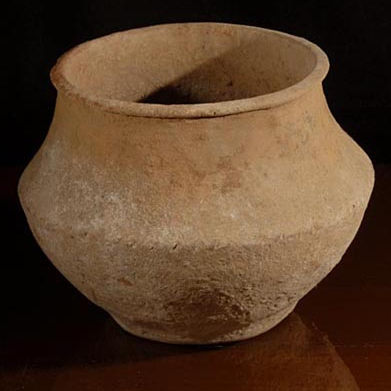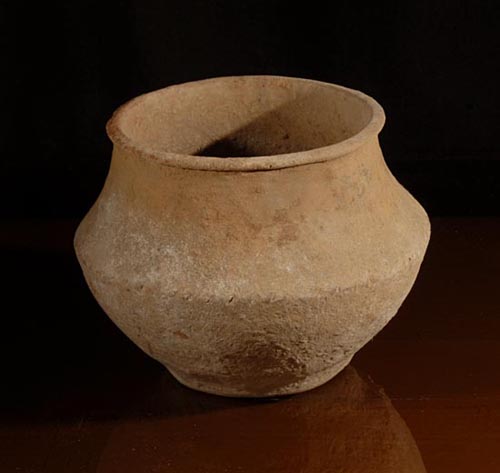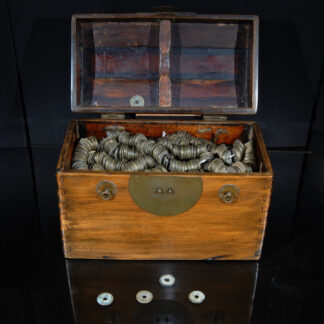Neolithic Pottery Vase, Dawenkou Culture 4300 – 2400 BC
A simple pottery vase likely from the Dawenkou culture along the coastal areas of what is now China. The most notable design features include the rimmed lip and the slightly serrated edge around the middle girth. The vase is 9.5 cm. tall and 13 cm. wide. The piece has not been cleaned to preserve its historical information.
Dawenkou culture
Dawenkou culture takes its name from the archaeological site near Dawenkouzhen in Shandong province. Dawenkou sites have been found along the eastern coast of China in the lower Yellow River valley region in Shandong and northern Jiangsu provinces, and in its later stage extends west into Henan province. Radiocarbon analysis indicates a long period of cultural activity from around 4300–2400 B.C. commonly divided into three phases:
- Early Dawenkou, 4300 – 3500 BC
- Middle Dawenkou, 3500 – 2800 BC
- Late Dawenkou, 2800 – 2400 BC
Tombs of various sizes have been excavated at Dawenkou sites, and range from sparsely equipped small burials to large tombs with up to about 180 objects. Artifacts found in the tombs include ceramic vessels, stone tools, jade ornaments, turtleshells, extracted human teeth, dog sacrifices, and pig skulls. The ceramics produced included earthenware vessels colored white, black, red, gray, brown, and yellow, whose types and their shapes changed considerably over the course of the Dawenkou period. The ceramics generally have a smooth finish, and often have been burnished, and they can be decorated with paint, carved, openwork, stamped, or applique designs. In addition, the selection of the clays for particular vessels was often tailored to its purpose. Carefully washed fine clays were reserved for delicate ritual wares, while clay with fine– or coarse–grained sand were often used for heavier utilitarian wares.




